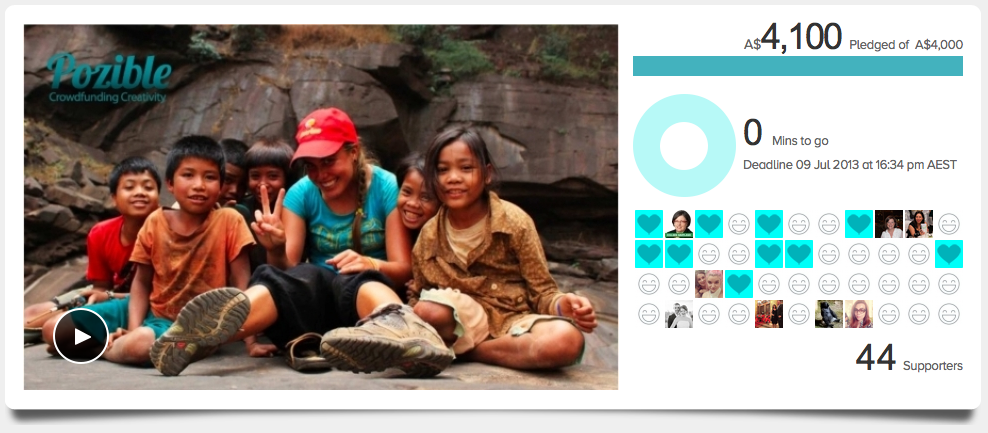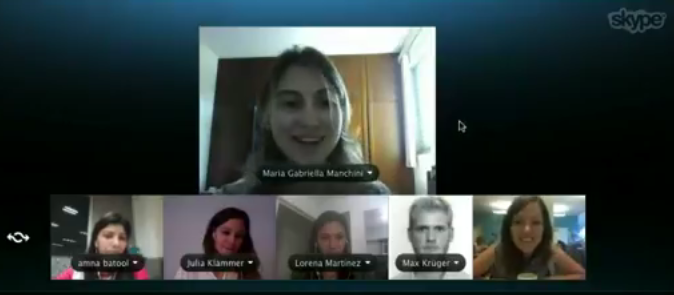Want to hear how past IDDS participants did it? Watch our live info session on "IDDS Fundraising Tips" here!
by Bianca Anderson, IDIN Network Member (IDDS '13 in Zambia and IDDS '14 in Tanzania)
Crowdfunding is a great way to raise the funds you need to attend IDDS. It takes time and energy but a well organized campaign can be very successful and rewarding – you can make new contacts, inspire people, and learn a lot in the process. There’s no set ‘way’ to crowdfund – it’s best to be creative, try different methods and be persistent. Remember: the more people who know about your cause, and how passionate you are, the more potential sponsors and supporters you have!
Make a plan
It can be overwhelming to think about how you are going to fundraise everything you need and who to approach. Making a plan will help to give you an overview and develop a specific task list for your campaign. You could start by completing the following
- Budget – How much do you need to raise? Break down your estimated costs into subheadings i.e. flights, visa, board and accommodation, insurance and medical costs
- Timeline – When do you need to fundraise the target by? Who will you approach and when?
- The Pitch – Think about why. Having a clear message for your campaign will help you to explain to others what exactly it is you are doing and why you need help. Referring back to your IDDS application can help!
- Make a list – Who are you going to approach? What type of materials are you going to use? Where can you promote your campaign? How will you do it? What other ways can people help you?
- Start your campaign – online crowdfunding platforms are interactive and a great way to collect funds. You can keep people updated on your progress and engage a wide audience. Try platforms like GoFundMe, Kickstarter, and IndieGoGo.
The Pitch
It may be necessary to have a slightly different pitch depending on who you are approaching. Think about how you might tailor it for an audience which is:
- Personal – friends and family
- Professional - organizations, companies, and affiliates
Who to approach?
Fundraising works best when you approach networks you know and who trust you. Think about all the potential people in your current and past networks as well as in your local community. Think about
- Local funding organizations like Rotary and Lions Club and other not-for-profits.
- Your alumni networks like school, university etc.
- Your current networks including family, friends and any other organizations you are involved in.
- Local/community organizations
How will you approach your networks?
People can only support you if they know about what you are doing. Think about the ways you can connect with people to gain their support. Some ideas are below:
- Face to face – talk to people, let them know who you are and what you are doing. Be positive and friendly. If you’re approaching new organization and people ask for a contact phone number or email.
- Phone call – explain what you are doing and ask if they can help.
- Email – always great as a follow up for phone calls and face to face meetings. An easy way to send people a link to your campaign to find out more.
- Hit the streets – go out and spread the word.
- Presentations – make a time to give a presentation at a monthly meeting or assembly.
Campaign Materials

Materials like sponsorship letters and flyers will help you to approach your networks and explain your campaign. There are examples in the ‘Campaign material’ folder.
- IDDS At A Glance - This is a simple 2-pager that will give any general audience an idea of what IDDS is and what type of projects we produce.
- Sponsorship letters – can be fantastic for approaching organizations and clubs for sponsorship. The letter can be tailored to suit the organization you are approaching or a general one. If applying for a specific sponsorship opportunity it is best for the letter to be personalized. Example here.
- Flyers (with tearoffs) – to put up around your local area. Example here.
- Handouts - To hand to people in the streets or around your local community. There should be a reminder to how people can donate to your campaign. Example here.
- Video – if you have an online campaign a short (2-3 minute) video is recommended. Example here.
- Brochure – for your employer or university (or other) to explain why they should support you and what’s in it for them. Example here.
Where to campaign?
Think about all the places you can promote your campaign.
- Local newspapers – are often great in supporting local talent. Call them and let them know what you are doing. Your story and attendance is most likely newsworthy and they can cross-promote your campaign.
- Newsletters – your alumni networks might have newsletters that they could put a notice in about your campaign.
- Online – think about other blogs you can cross-promote with or tap in to the IDDS networks
- Local area – put flyers up in supermarket, think about handing out flyers in busy local areas, talk to local shopkeepers about putting a notice in their window.
- Events – like conferences, makerspaces, markets and other social events.
What type of support?
You’re likely looking for financial support but not everyone will be in a position to donate. Think broadly of ways people can support you in this case – and remind them they can always help!
- Donate or pledge – always make sure you tell people how they can donate. i.e. online, with you in person or with someone else who might be helping with your campaign.
- Printing – if you’re printing flyers or posters to give out a local printer might be able to help with reduced or free printing costs.
- Promotion – just mentioning your campaign reaches more people. Think about local newspapers, radio stations, newsletters, online blogs and social medial sites like Facebook and Twitter.






.JPG)